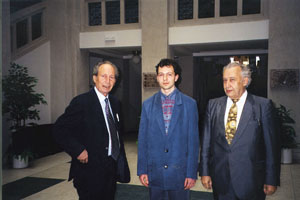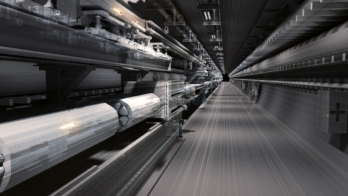Particle physics in the Czech Republic is maturing fast. This was the message that emerged from the European Committee for Future Accelerators (ECFA) during its continual tour of CERN member states as it recently surveyed national activities at a meeting at the Masaryk Hostel of the Czech Technical University, Prague. (The hostel is named after Tomás Masaryk, who was the first president of the Czechoslovakian Republic, from 1918 to 1935.)
At the ECFA meeting, policy issues in the Czech Republic were presented by M Potucek and Pavel Chraska, respectively deputy chairman and a member of the national Research and Development Council. This agency is proposing new rules for the organization finance of research and development. The keyword in these presentations was “changes”, of which there have already been many since the 1989 “velvet revolution”, but there are more to come.
One major purpose is to make the Czech system more compatible with that of the European Union countries. For example, scientific research was traditionally carried out almost entirely at the institutes of the Academy of Sciences while the universities were “just for teaching”. This has now changed. There has also been a drastic reduction in the number of people employed by the academy, from about 13 000 to about 6500. Several institutes of the academy have been closed.
After several difficult years there is now optimism in the air. The state support of R&D – 0.4% of national GNP in 1999 – is expected to be 0.6% in 2000 and to increase to 0.7% by 2002. One difficult remaining problem concerns how to attract young people, who are badly needed, because the average age in this sector is high. The salaries offered to young people are simply not attractive enough.
The status of high-energy physics in the Czech Republic was reviewed by J Niederle, president of the National Committee for Collaboration with CERN, and by J Hosek. The good news here is that there has been a substantial increase in the number of high-energy physicists in the Czech Republic since the ECFA last visited the country in 1994. The number of theorists has increased from 37 to 51 and that of experimentalists from 39 to 94. This is partially due to the change of orientation of scientists already in the system. The average age of permanently appointed staff is high – 48 for theorists and 51 for experimentalists.
So far the Delphi experiment at LEP has been the central activity of Czech experimental physics. For the future, ATLAS at the LHC will take over this role. However, Czech physicists also take part in a range of other experiments at CERN (ALICE, CERES, DIRAC, ISOLDE, NA57) as well as in several R&D projects. Outside CERN, Czech physicists participate in the D0 experiment at Fermilab and in H1 at DESY. Since 1998 the Czechs have also been involved with the Auger cosmic-ray project.
Across this now wide spectrum – in R&D, detector building, data analysis and theory – Czech physicists make an important contribution to the world particle physics effort in general and to the CERN programme in particular. At the meeting, Czech physicists described this contribution.


Charles University, Prague
The oldest university in central Europe, Charles University in Prague, was founded in 1348 by Charles IV, then Holy Roman Emperor and King of Bohemia. Austrian physicist and philosopher Ernst Mach was a professor there for 28 years (1867-95), during which time he proposed Mach’s principle, which greatly influenced Albert Einstein’s thinking in the formulation of his theory of gravity. Mach also served as rector of the University. Appointed professor at the university in 1911, Albert Einstein became aware there of the importance of tensor calculus for his work on general relativity. His student at Prague was Otto Stern. When Einstein left Prague the following year, he was succeeded by Philipp Frank.





